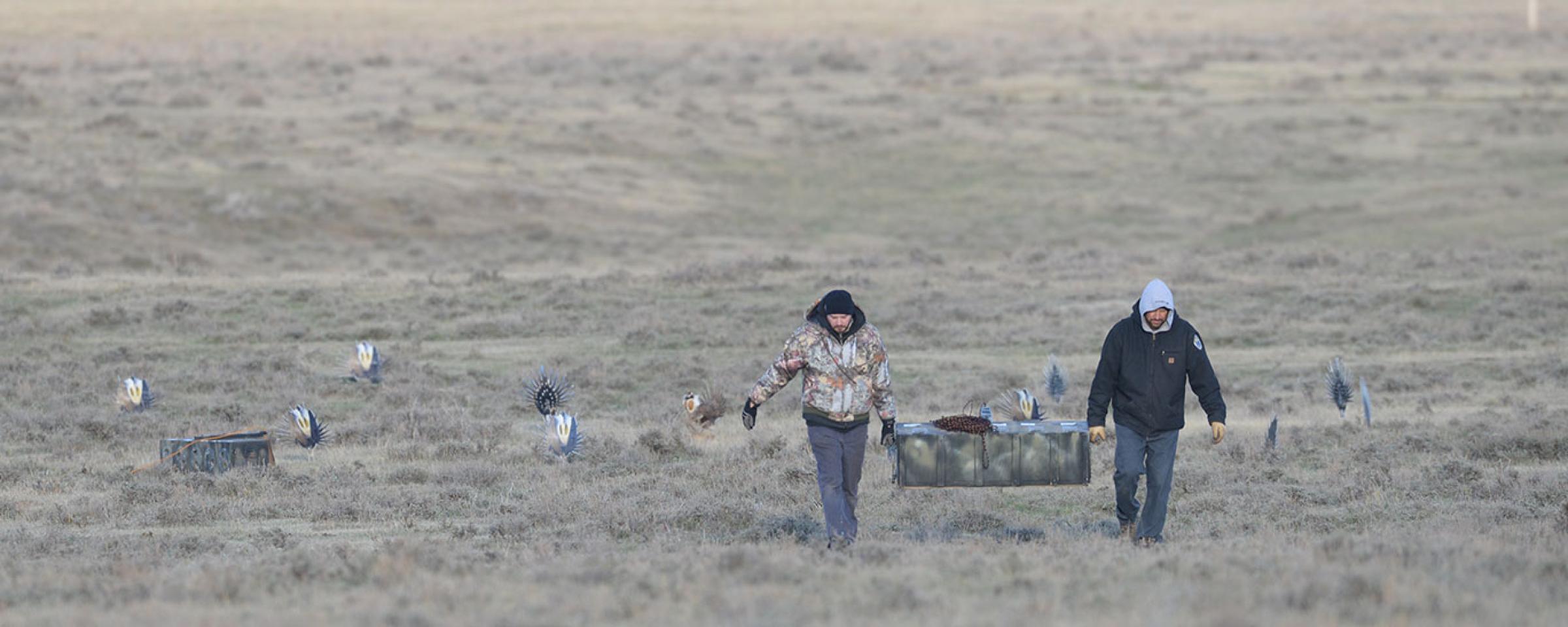
Back Cast
It’s a start.
Readers will remember that in April state Game and Fish Department personnel moved 60 sage grouse – 40 females and 20 males – from Wyoming to Bowman County in southwestern North Dakota. All the adult birds were marked with GPS and VHF radio devices so wildlife biologists can keep track of their whereabouts.
This translocation project, with assistance from the Wyoming Game and Fish Department, was initiated in an effort to, fingers crossed, help build North Dakota’s declining sage grouse population.
Fundamental in the project was the artificial insemination of a sample of female sage grouse, with the hope that some would nest in southwestern North Dakota.
After their release in April, Aaron Robinson, Department upland game management supervisor, said to get some of the females, even just a few, to initiate a nest, would likely anchor them to North Dakota and, in turn, do the same to hatched young.
In mid-June, Robinson reported that two hens had successfully hatched young and were brooding chicks. Two other hens, as of June 17, were still sitting on nests, waiting for their chicks to hatch, which was expected to happen in the following week to 10 days.
“You always want more, but this is positive,” Robinson said.
It’s a start.
Robinson said that five other sage grouse nests failed because of depredation by predators, and those birds are unlikely to renest.
Robinson said that of the GPS and VHF marked birds, 11 females and five males have died.
“I expected this type of mortality,” Robinson said. “The highest mortality for sage grouse is in springtime during breeding when they are most vulnerable to predators.”
The translocated sage grouse are monitored daily by graduate student, Kade Lazenby, and two technicians. Among other things, they are checking to see the kind of habitat the birds chose to nest in.
Robinson said the next important step is for the chicks to grow, avoid the many obstacles in the wild that could kill them, and become part of the population.
“If we can get those chicks to survive, then we are in better shape than we were,” Robinson said.
Because Lazenby and crew are keeping their distance so as not to disturb the two females tending to broods, it’s unknown how many young are actually on the ground.
No matter, it’s a start.
Robinson said the plan is to translocate another 60 sage grouse from out-of-state next spring, with the goal of anchoring more birds into North Dakota’s sage grouse population.
“I just keep crossing my fingers that some of these chicks are recruited into the population,” Robinson said.
